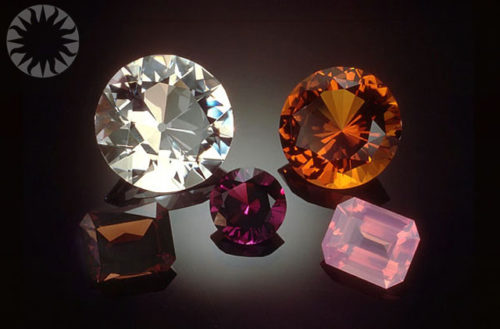Difference Between Glass and Quartz

Crystal Cut Glass Mushroom Lamp
Both glass and quartz are crystals are used for decorative and industrial purposes. Glass is popularly utilized to make prisms, windows, chandeliers, pendants, necklaces, and most types of household jewelry. Quartz, on the other hand, is usually present in watch batteries and electronic gadgets.
The phrases ‘liquid quartz’ and ‘quartz crystal’ can usually be seen in the technical specifications of a wide range of gadgets. In the industrial trade, glass is formally known as cut glass crystal, while quartz is referred to as quartz crystal. Other names for glass include fine crystal, Swarovski crystal, cut crystal, or Austrian crystal.
There are four major differences between glass and quartz. The first difference relates to silicone dioxide content. Both naturally occurring and artificial quartz crystal contain at least ninety-nine percent silicone dioxide, while cut glass crystal only consists of up to eighty percent silicone dioxide. Furthermore, glass products usually contain thirty-two percent lead, used to enhance glass quality. Mixing lead into the artificial manufacturing of cut glass crystals increases refraction of light, resulting in shinier, less hazy glass products. Like all other crystals, the value of both glass and quartz is dependent on luster, or the amount of light refracted.
The second major difference between glass and quartz involves their chemical structure. Whether obtained naturally or artificially, cut glass crystal has a random molecular structure, unlike quartz and other naturally occurring crystals, which have a symmetrical structure. Because of its irregular molecular structure, glass is treated as an amorphous solid. Raw, naturally formed quartz and other semi-precious crystals such as sapphire, ruby, topaz, diamond, and emerald can develop with a perfectly symmetrical structure, but they can also become irregular due to intense pressure and weathering. Most naturally occurring crystals have to be processed through cutting and polishing in order to attain a perfectly symmetrical form. Quartz is a popular crystal because it comes in different colors.

Quartz Gems
Examples of quartz colors include golden yellow, smoke, rose, and purple. Quartz is formed this way due to the combination of other crystals, such as citrine and amethyst. Materials used to refine gemstones can also be derived from quartz; examples of such materials include onyx, chrysoprase, chalcedony, and amazonite. Onyx can be applied to other gemstones and surfaces in the form of black dye, chrysoprase – as green dye, chalcedony – as blue dye, and amazonite – as mottled green dye.
The third difference between glass and quartz has to do with their tolerance to temperature and pressure. Even though both naturally occurring quartz crystal and cut glass crystal form deep in the earth’s crust, quartz crystal can withstand higher temperatures. This makes quartz a valuable material that can be used as protective covering due to its resistance to high pressure. It can also be utilized in harsh environments with high temperatures as a substitute for glass.
The fourth difference between glass and crystal is very important in the industrial trade. Many products need either insulation or conductivity to electricity in order for them to work optimally. Glass is a good electricity insulator, while quartz is a great electricity conductor. Because of these electrical traits, both glass and quartz crystals are integrated in many products to channel or cut the flow of electricity.
Summary
- There are many differences between glass and quartz. The first one lies in the silicone dioxide content; glass has roughly eighty percent, while quartz can contain over ninety percent.
- As an amorphous substance, glass has a random molecular structure, while quartz has a symmetrical molecular structure.
- Quartz can be subject to greater temperature and pressure as compared to glass.
- Both quartz and glass are utilized for electrical purposes; glass is an insulator, while quartz is a conductor.
- Differences Between Fraternity And Sorority - January 8, 2014
- Differences Between Lucite and Plastic - January 7, 2014
- Differences Between Oil and Butter - January 6, 2014
Search DifferenceBetween.net :
6 Comments
Leave a Response
References :
[0]https://c1.staticflickr.com/9/8501/8335361017_ab304c306b_z.jpg
[1]https://www.flickr.com/photos/publicresourceorg/493888919

both glass and quartz are not crystals. glass has no lattice. i’m surprised that the first sentence falsely states a difference as a similarity. nice work.
true, glass is amorphous.
And there is no such thing as Silicone Dioxide. Silicon Dioxide, yes… that’s what you find in glass and quartz. Silicone is an inert, synthetic polymer based rubber-like compound found in things like caulks and breast implants. Apparently, somebody does not know the difference.
And this: “On the other hand, quartz conducts electricity easily.” Absolutely False. Quartz does not conduct electricity.
Examples of insulators:
glass
rubber
oil
asphalt
fiberglass
porcelain
ceramic
quartz
(dry) cotton
(dry) paper
(dry) wood
plastic
air
diamond
pure water
It’s a conductor at very high temp just like rubber
Just a small, but technically significant, correction: the term used here, silicone dioxide, should be silicon dioxide, without the ‘e’ at the end of silicon, since silicon is an element, and “silicone” is a variety of molecular compounds.